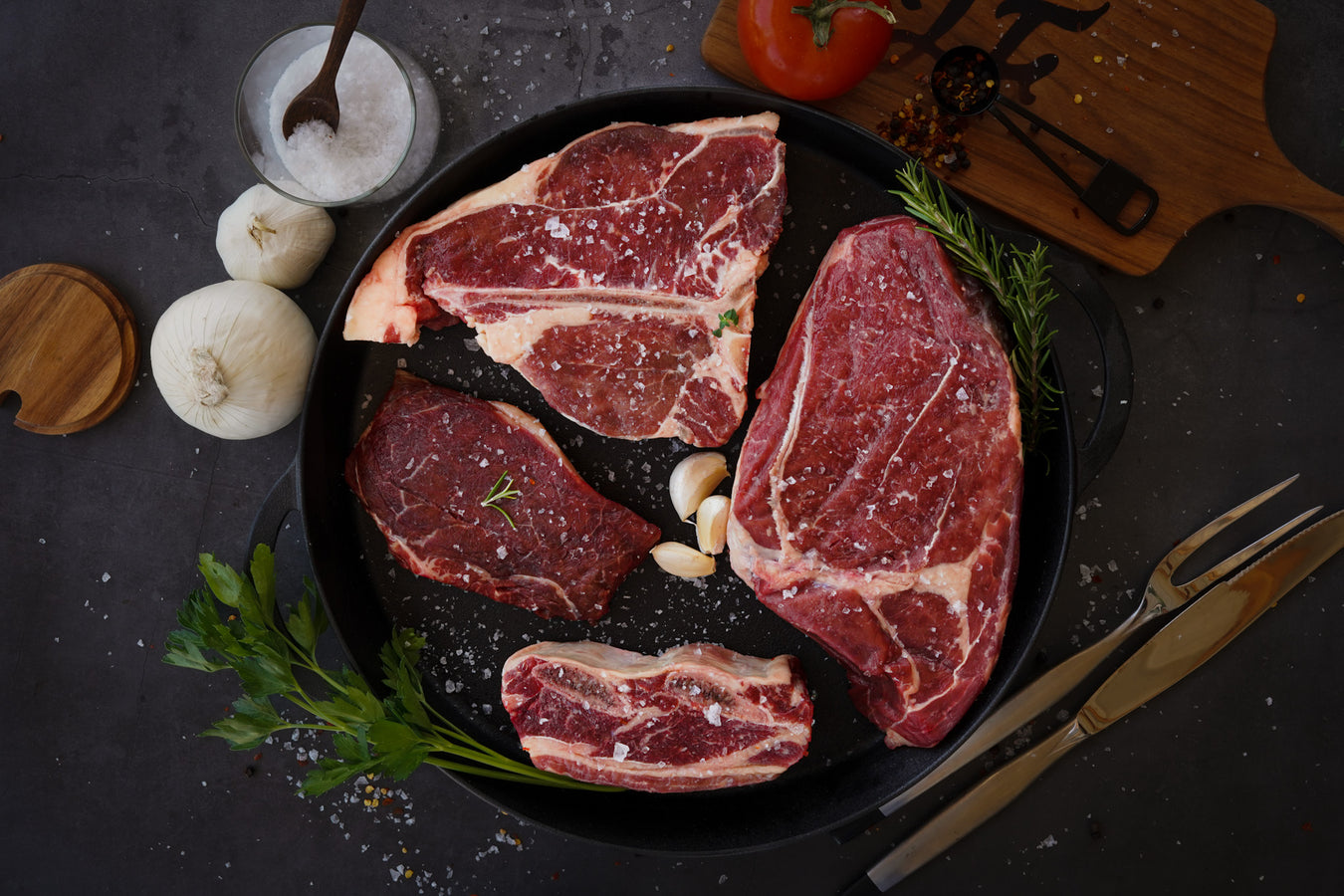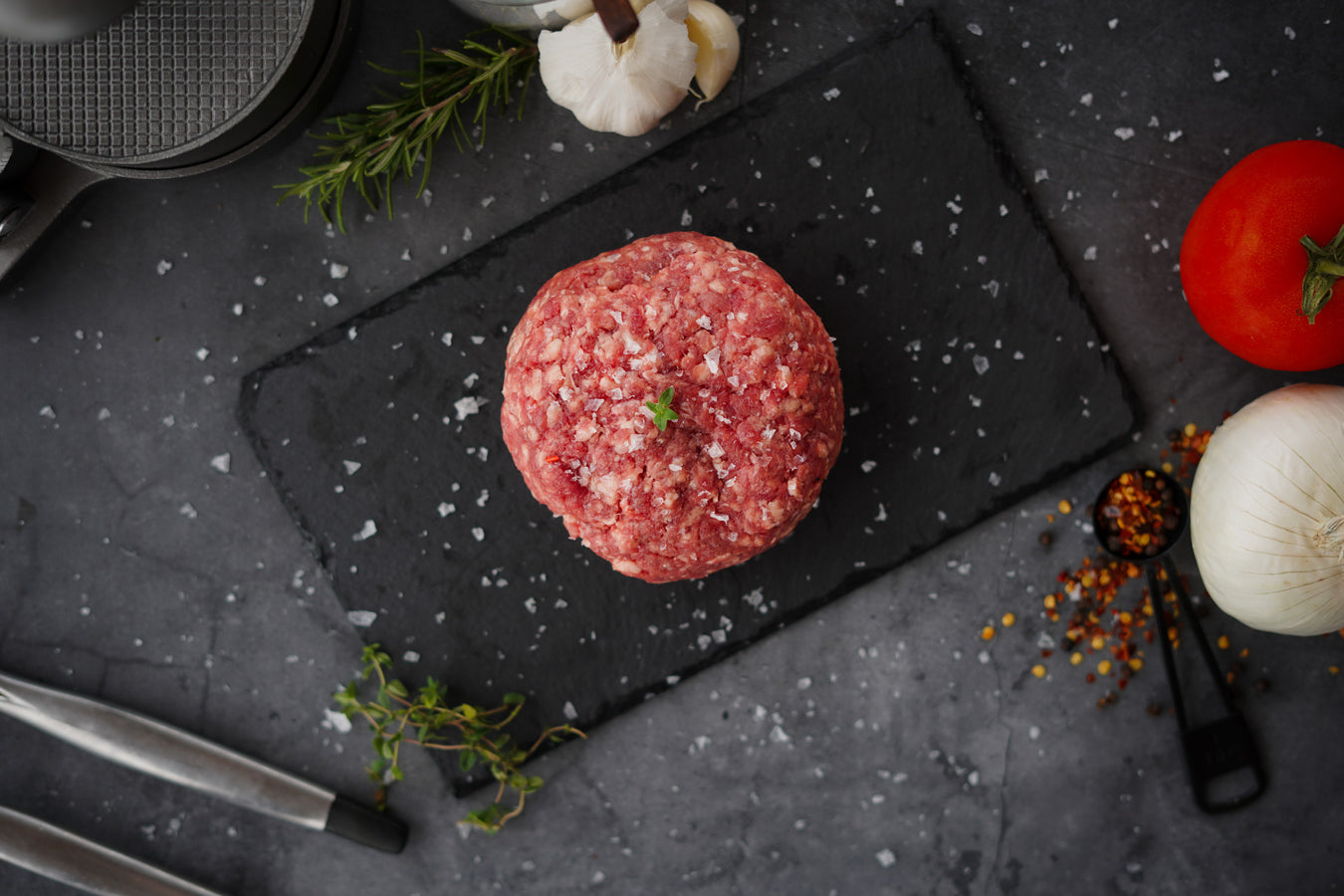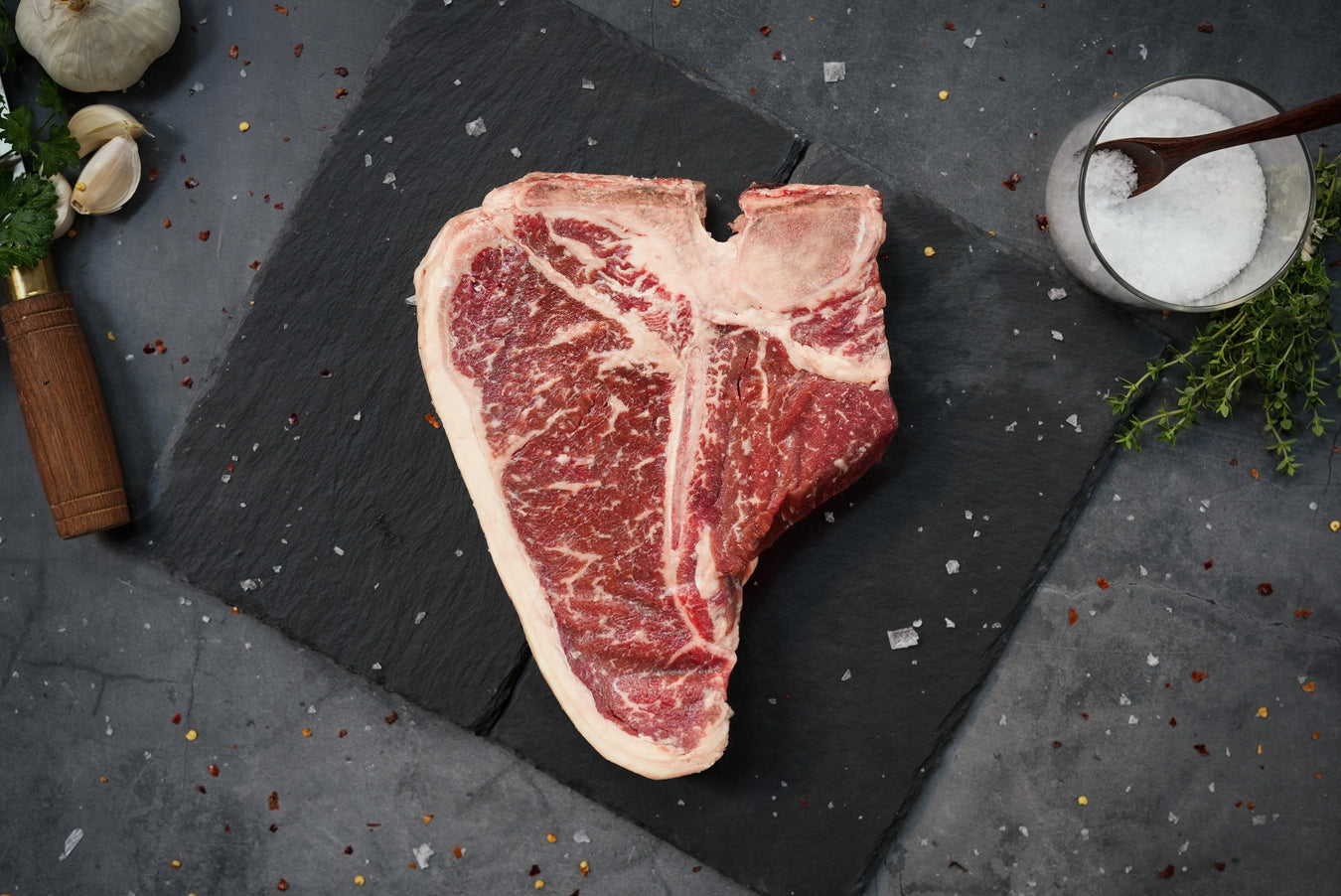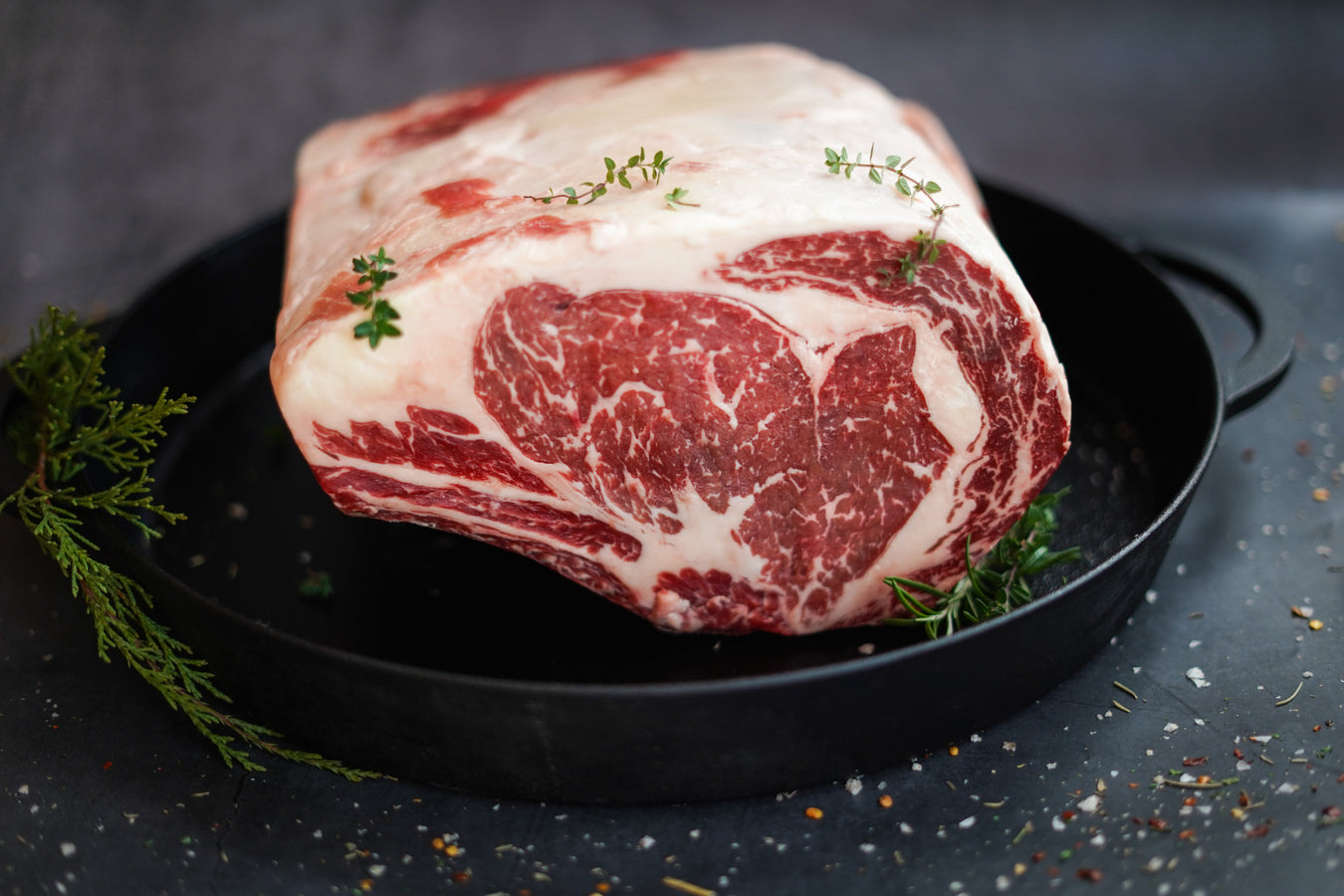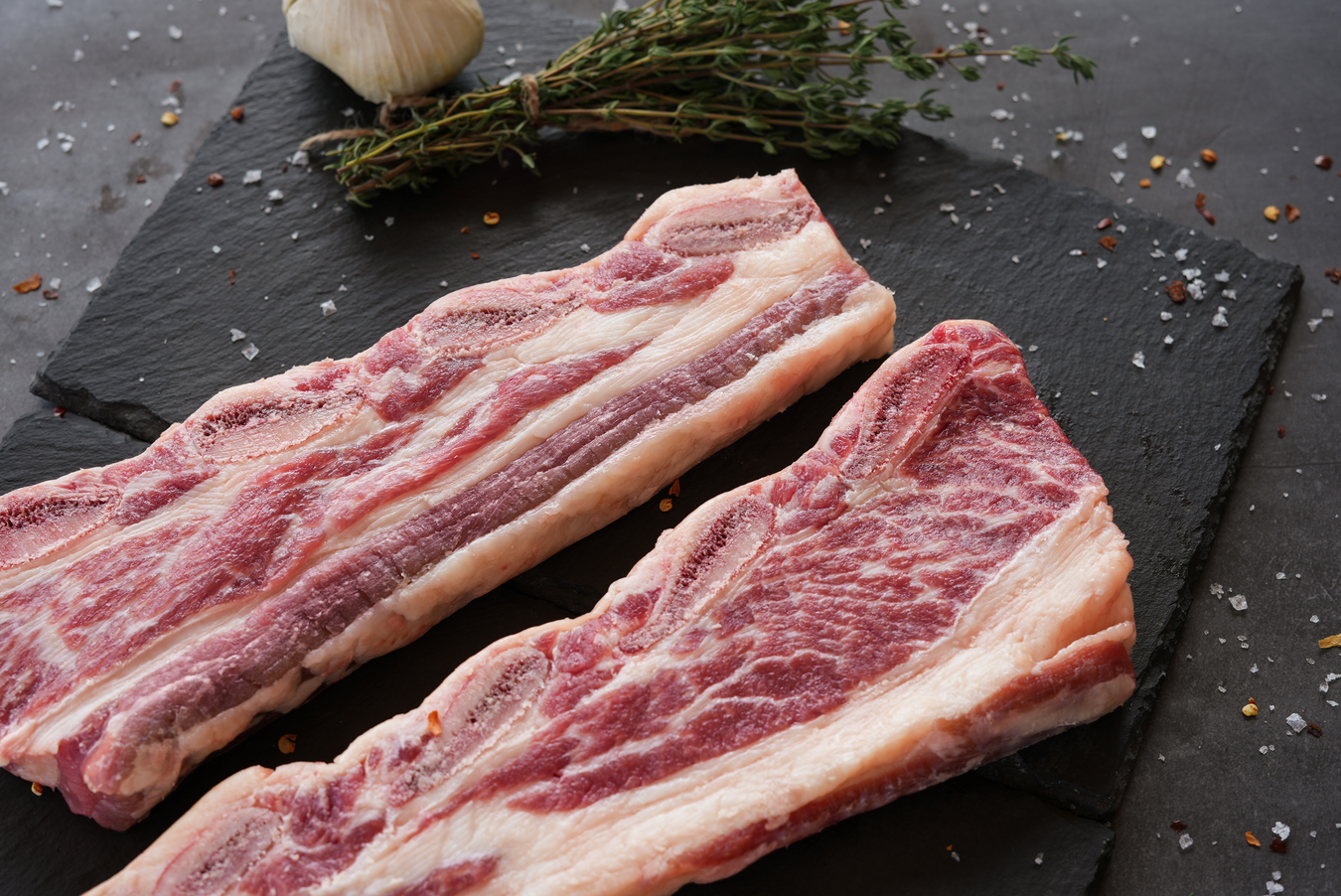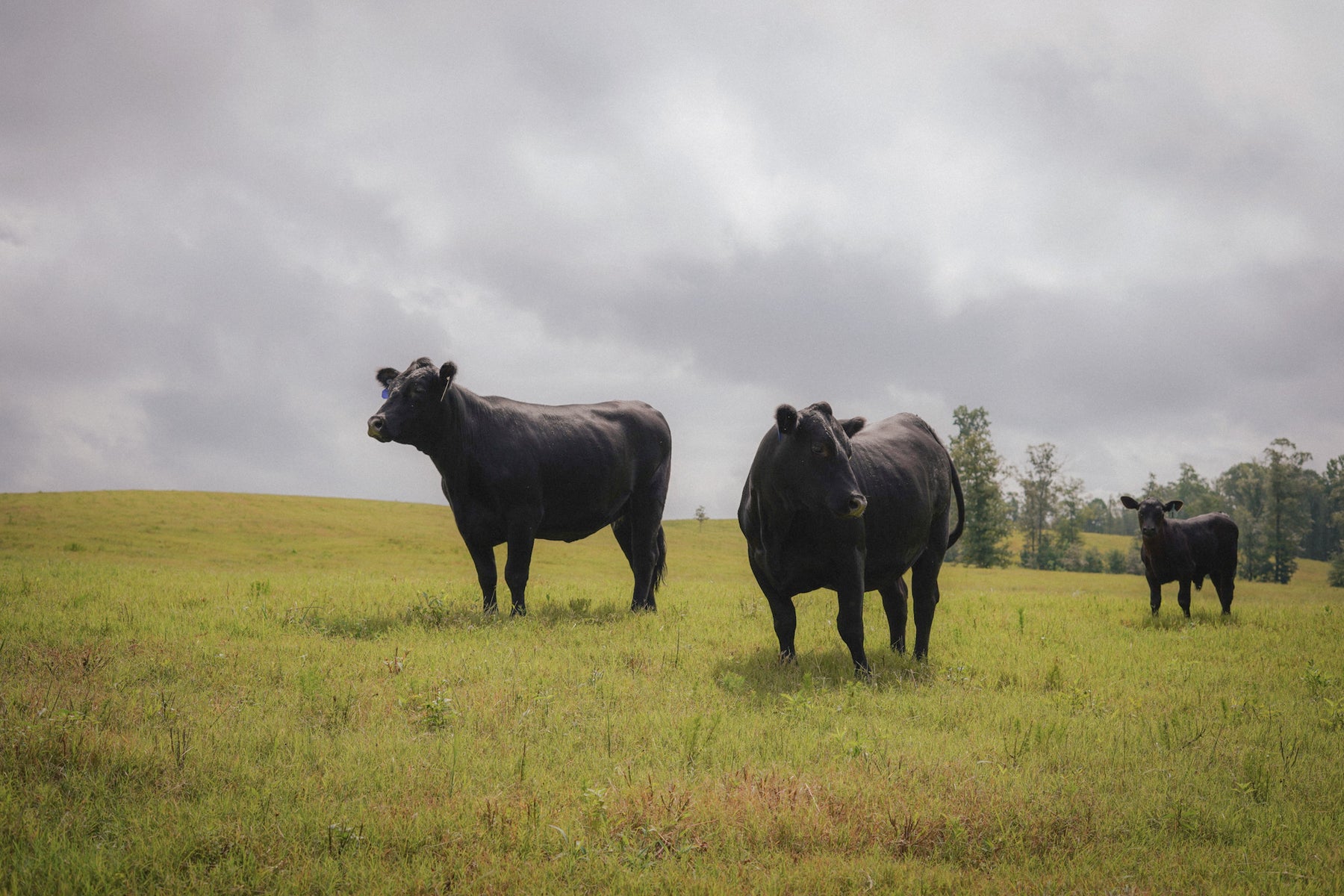
Where Does Beef Come From?
Have you ever wondered, while shopping at the supermarket, about the journey of that steak or burger in your shopping cart? Let's break down the process and also delve into some of the issues within America’s beef supply chain.
The Beginning: Cow Calf Operations
It all starts at the cow calf operations, where ranchers breed and care for their cattle. These operations are where calves are born and raised by their mothers until they are around 6-9 months old and weaned. Raised on pasture, this stage is crucial for ensuring the health and well-being of the animals before they move on to the next phase of their journey.
Stocker Cattle
After weaning, young cattle are often sold from cow calf operations to stocker operations, also known as backgrounders. Here, they continue to graze on pasture until they reach around 700lbs, at which point they are sold to a feedlot for the final stage of their journey.
Transition to Feedlots
Feedlots are where cattle undergo a period of growth and fattening. Designed to efficiently feed and manage large numbers of cattle, feedlots provide a balanced diet consisting of grains, forages, and supplements to promote healthy weight gain. While there is some debate on the environmental sustainability of this phase of beef production, it plays a significant role in meeting the demands of the beef market.
Journey to the Packers
Once cattle have reached their optimal weight for slaughter, usually around 1,200-1,400lbs, they are transported to packing plants. Here, they are slaughtered and processed into cuts of beef before being distributed to retailers, restaurants, and ultimately, your table.
Lack of Country of Origin Labeling
In 2015, the USDA stopped mandating Country of Origin labeling for beef, meaning there is no way to know if the beef you buy in the grocery store is indeed from the US. This practice has allowed for market manipulation by the Big Four Packers (Tyson, Cargill, JBS, and National Beef), as the American consumer can no longer drive market conditions to favor US beef over foreign imported product.
How to Buy American Beef
Fortunately, there are alternative options for sourcing American beef, and the best way to do so is to buy directly from a farm or ranch. Often, these ranches will even ship their beef, making it easier than ever to source American beef. If you're looking to buy direct, consider purchasing from our farm, Lily Hill Farm. We ship and would love to be your family's source of beef.
Understanding the journey of beef from farm to fork sheds light on the complexities and challenges within the industry. By supporting local producers and seeking transparency in our food supply chain, we can make informed choices that promote sustainability, quality in the beef we consume and support American ranchers.

